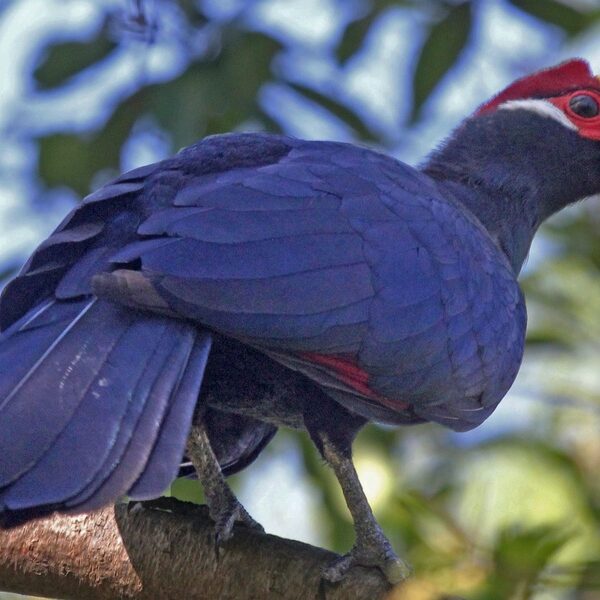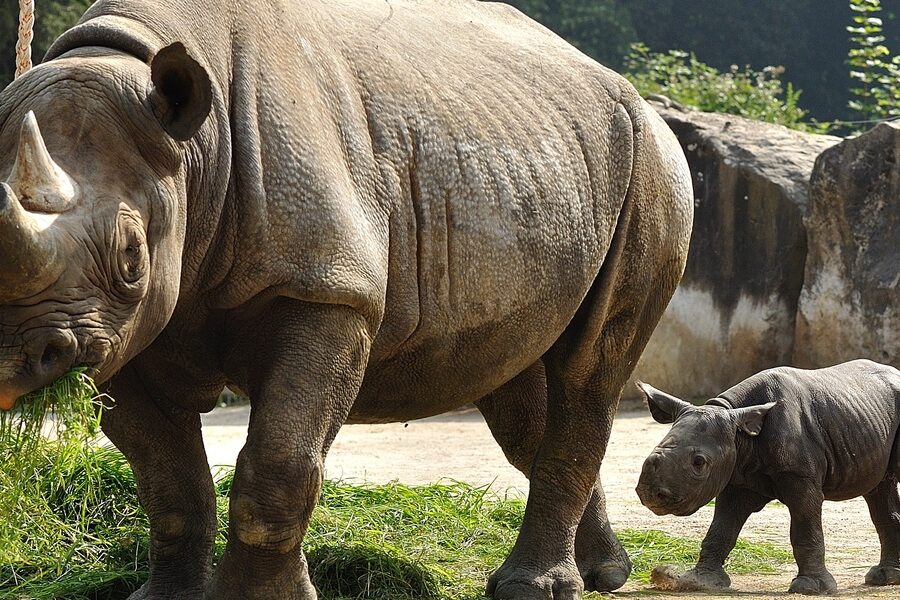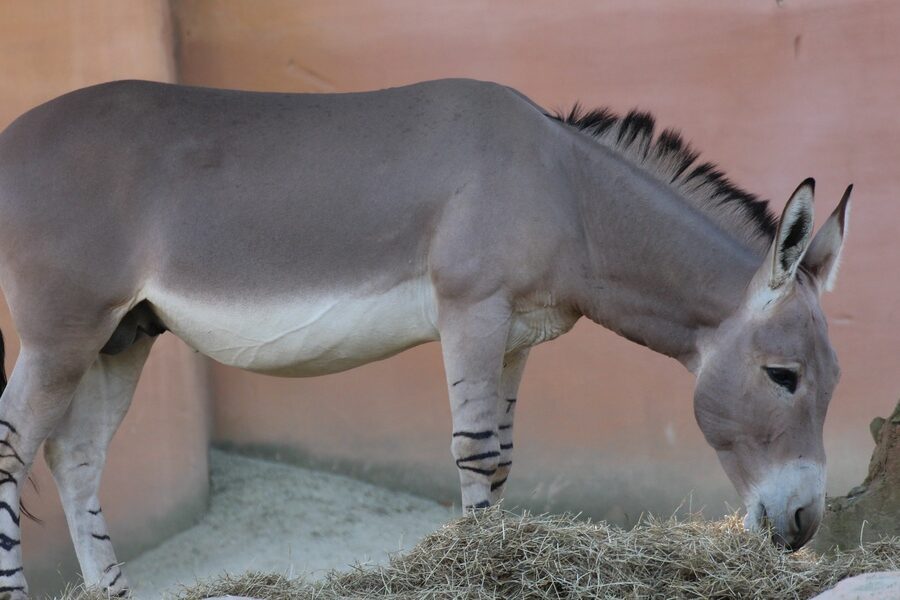Adult male common hippos can weigh between about 1,500 and 1,800 kg (3,300–4,000 lb), which feels unexpected for an animal that spends so much of its time half-submerged in rivers.
That bulky, barrel-shaped body hides a set of adaptations—huge jaws and tusks, skin that stays moist and protected, and a breathing setup that lets them live in water for long stretches—so they’re both lumbering and surprisingly athletic.
These ten defining characteristics explain how the hippopotamus survives, behaves, and shapes the rivers and communities where it lives; the list covers anatomy, behavior, physiology, and conservation and promises concrete examples, numbers (gestation ≈8 months; lifespan ≈40–50 years), and field observations.
Physical Size & Anatomy

Hippos are defined first by their size and skull structure: an enormous mass and heavy skeleton, an oversized mouth with long canines, and skin uniquely tuned for a life spent partly in water. Together those three features shape how hippos defend territory, crop grass, and avoid heat and sun damage.
1. Massive body and weight
Adult hippos are extremely heavy for semi-aquatic mammals. Typical adult males weigh between 1,500 and 1,800 kg, while females average around 1,300 kg, with shoulder heights often exceeding 1.5 m.
The mass matters: it helps deter predators and gives momentum in river fights, but it also changes movement—hippos buoy up easily and can move underwater, yet on land they can sprint in short bursts up to about 30 km/h when provoked.
2. Large mouth, tusks, and powerful bite
The hippo’s mouth can open more than 150 degrees, exposing massive canines and incisors; in large males the canines or tusks often exceed 30–50 cm in length. Museums frequently display hippo skulls that emphasize those long tusks.
Those jaws and teeth are less about chewing grass and more about fighting and defense—males use them in violent river-bound clashes, and recorded fights sometimes leave deep, gaping wounds on rivals.
3. Thick skin and distinctive secretions
Hippo skin is unusually thick—on the order of a few centimetres in places—and very sensitive. It produces an orange-red secretion (sometimes called “blood sweat”) containing pigments such as hipposudoric acid that act as a sunscreen and have antimicrobial properties.
Veterinarians treating hippos must respect that sensitivity; sun exposure or drought can stress animals, and you’ll often see a conspicuous orange-red sheen on those that are basking or freshly out of water.
Behavior and Social Life
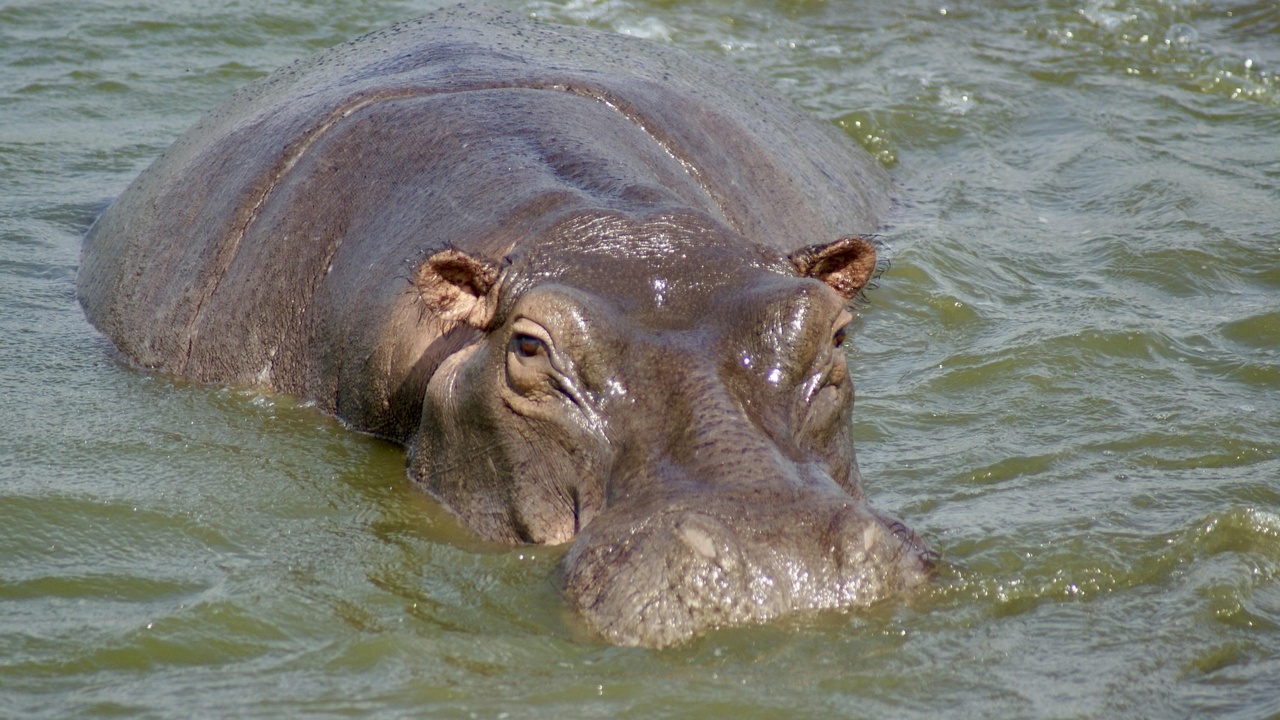
Hippo behavior is shaped by a day-in-the-life split between water and land, strong male territorial instincts, and a social structure based on pods. They spend long daylight hours submerged, gather in groups for socializing and defense, and then leave the water after dusk to graze.
Those rhythms affect people and rivers: nocturnal grazing can bring hippos into agricultural fields, while male aggression makes some stretches of river hazardous for boats and fishermen.
4. Semi-aquatic lifestyle and nightly grazing
Hippos are primarily semi-aquatic, spending most daylight hours submerged to keep cool and social. After dusk they walk onto floodplains and grasslands to graze, commonly traveling 1–6 km each night and sometimes farther when food is scarce.
That nightly movement shapes plant communities and can lead to conflict when hippos cross roads or enter cropland; rangers frequently report hippos moving several kilometres from rivers to feed, especially during the dry season.
5. Territoriality and aggressive behavior
Dominant males defend stretches of river vigorously, using displays—wide yawns, water splashing, and dung-marking—to warn rivals. If displays don’t work, fights can be brutal; males will attack boats, crocodiles, or people they perceive as threats.
Because of that aggression, tour operators and local communities follow strict safety rules: keep distance, avoid loud approaches, and never position a small boat between a male and his pod. Ranger reports regularly list capsized small craft caused by agitated hippos.
6. Social groups and vocal communication
Hippos form groups often called pods, bloats, or schools; typical sizes are 10–20 individuals, though some aggregations reach around 30. Social structure centers on a dominant male with subgroups of females and young.
They communicate with low-frequency grunts, wheezes, and loud surface calls that travel well through water. Researchers use audio and aerial surveys to estimate numbers and map social interactions, and field recordings show distinct calls tied to dominance and maternal care.
Physiology & Survival Adaptations
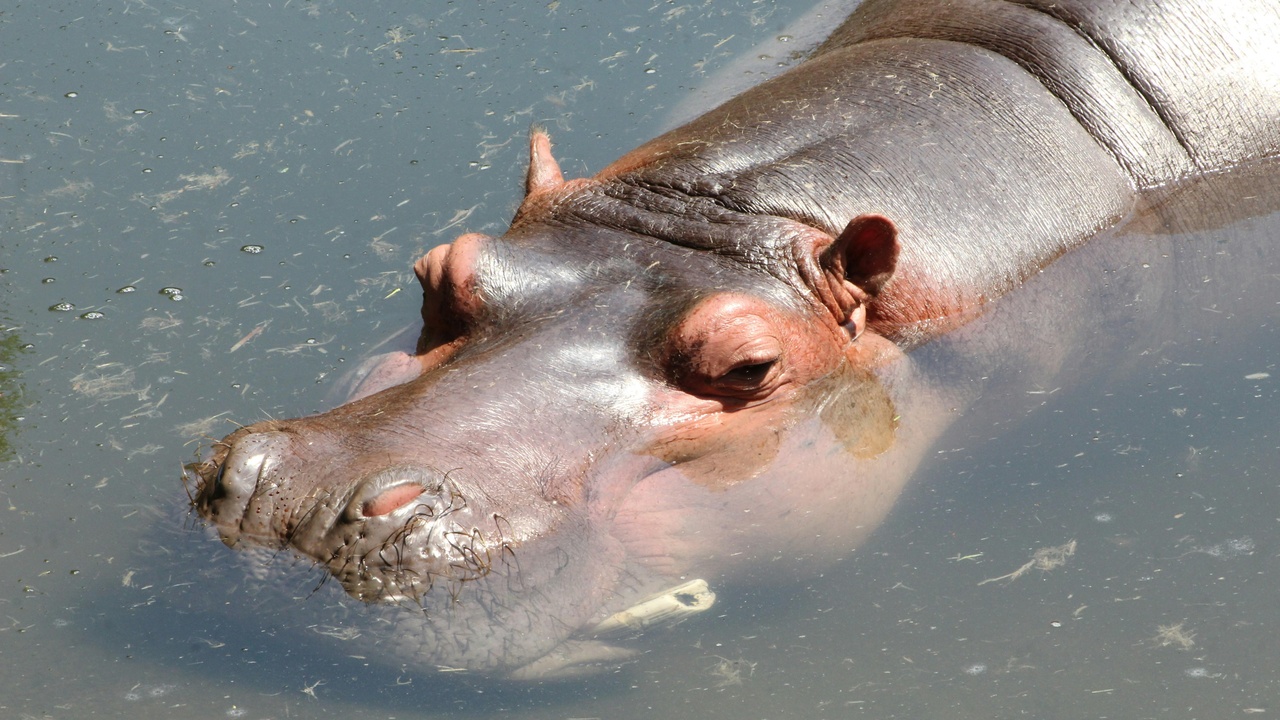
Physiological traits let hippos thrive in riparian habitats: nostrils and eyes set high on the head, the ability to hold breath while submerged, digestion tuned to fibrous grasses, and reproductive timing suited to local seasons. These features support survival in hot, wet climates and a primarily nocturnal feeding schedule.
Gestation runs about eight months, and wild lifespans commonly reach 40–50 years, so individuals can be long-term residents of particular river systems.
7. Respiratory and thermoregulation adaptations
Hippo nostrils, eyes, and ears sit high on the skull so an animal can breathe and watch while mostly submerged; they can close their nostrils and ears when underwater and hold their breath for several minutes between surfacings.
Submergence plus the pigmented skin secretions helps regulate temperature and limit water loss in equatorial sun, which is why zoo husbandry schedules feedings to mimic nighttime grazing and researchers plan surveys around typical dive cycles.
8. Herbivorous diet and digestive traits
Hippos are primarily grazers, feeding mostly on grasses at night; an adult often consumes about 30–40 kg of vegetation each night. Their large, multi-chambered stomachs ferment fibrous plant matter efficiently enough for a grass-only diet.
Those grazing patterns shape floodplain vegetation and can push hippos into croplands when natural forage is limited, prompting both conflict and efforts to provide buffer zones or alternative water and grazing resources.
Ecological Role & Conservation
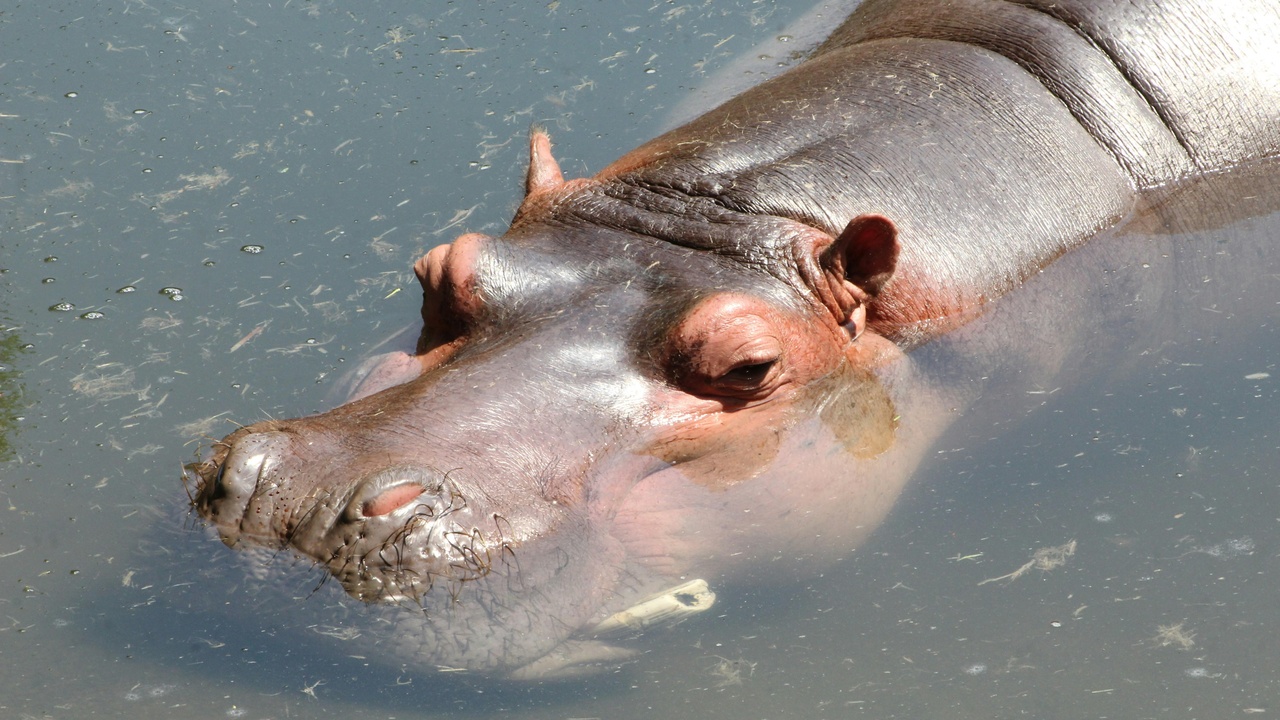
Many of the characteristics of a hippopotamus have outsized effects on rivers: by grazing terrestrial plants and depositing dung in water, hippos move nutrients from land to aquatic systems, altering algae, insect, and fish communities. That ecological role, combined with threats from habitat loss and hunting, makes conservation complex.
The IUCN currently lists the common hippo as Vulnerable, and global population estimates range roughly between 115,000 and 130,000 individuals, with strongholds in parts of East and Southern Africa and declines in other regions.
9. Ecosystem engineering and nutrient transfer
Hippos transport large amounts of terrestrial plant material into rivers through nightly grazing and daytime defecation; that dung provides a pulse of organic matter that can boost fish productivity and alter algal communities downstream.
Fishermen in some areas report higher catches near hippo pools, and observational studies have linked hippo-occupied stretches with increased aquatic biomass—an important consideration for river management and local livelihoods.
10. Conservation status, threats, and human dimensions
The common hippo is listed as Vulnerable by the IUCN, primarily because of habitat loss, agricultural expansion, hunting for meat and tusks, and watercourse changes from dams and extraction.
Population estimates of roughly 115,000–130,000 individuals mask wide regional variation: some national parks in Zambia and parts of Uganda still support healthy numbers, while other river systems have seen steep declines.
Conservation approaches mix protected-area management, community-based programs, human-wildlife conflict mitigation (fencing, alternative grazing), and anti-poaching work; supporting evidence-based research and responsible ecotourism helps build local incentives to protect hippos.
Summary
- Hippos pair extreme mass with aquatic adaptations—big bodies, huge jaws, and skin secretions—that support defense and a semi-aquatic life.
- They follow a daily rhythm: long daytime submergence and nighttime grazing that moves tens of kilograms of plant matter into rivers.
- As ecosystem engineers, hippos transfer nutrients that can increase fish and algal productivity, affecting local fisheries and food webs.
- Current threats—habitat loss, hunting, and water changes—have placed the species at Vulnerable status, so landscape-scale and community-centered conservation is essential.
- Consider supporting local conservation groups or protected-area programs and follow safety guidelines when visiting hippo habitat to help both people and hippos coexist.

